Happy Shetlands in a magical landscape:
no wornder they make wonderful wool !
no wornder they make wonderful wool !
I have spent the whole week finishing about 3 kilos of custom spinning orders and dyeing an amazing new blend: Silky Shetland. I havet o admit I have been a bit obsessed with all things Shetland in the last months, because ethere are some new and exciting yarn and fibre adventures on the horizon. A good friend even sent me two ShetlandWool Week books! Fibre and yarn friends are the best ever ! Thank you so much Cazknits !

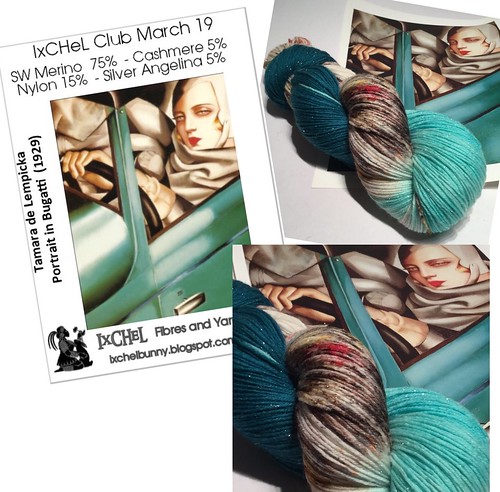 March Yarn Club
March Yarn Club
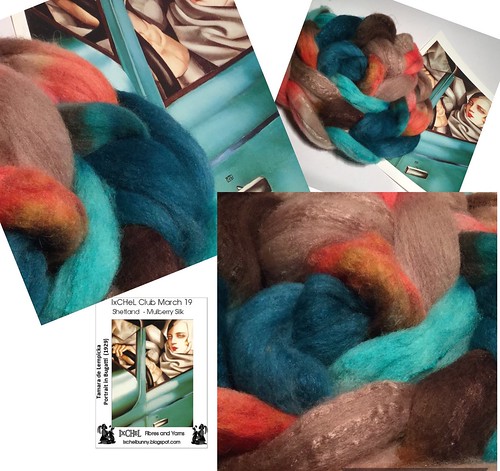 March Fibre Club
March Fibre Club
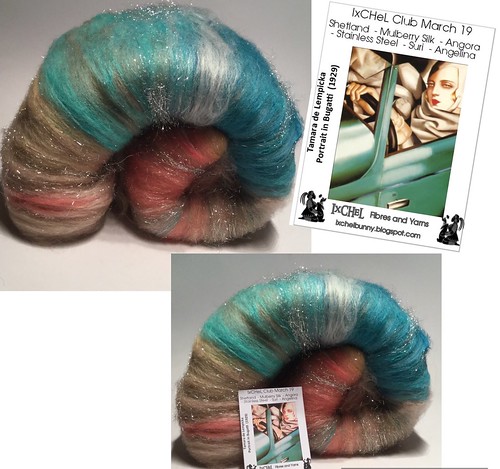 March Batt Club
March Batt Club
The update of tonight is an amazing new blend of a super soft batch of Shetland wool blended with ultra shiny Mulberry Silk and a dash of Angora bunny.
Sheep have lived on the Shetland Islands for well over 1,000 years, adapting to the harsh environment and thriving in the cold, wet climate.
The sheep of Shetland were an important part of subsistence agriculture of the islands, and the rugged habitat and geographical isolation produced a breed that is distinct and significant. The Shetland breed likely descends from ancient Scandinavian sheep, and it is a member of the northern short tailed sheep breed family. Historically, only a few Shetland sheep were exported, and it was not until recently that large populations were established on the British mainland and in other countries. Though fleece continues to be the breed’s primary product today,
Shetland sheep are fine boned and small in size. Rams weigh 90–125 pounds, and ewes weigh 75–100 pounds. Most rams have spiraled horns, while most ewes are polled. Shetland sheep are calm and charming in disposition, docile, and intelligent. The Shetland breed is especially prized for its wool, which is fine, soft, and strong. Fleeces average two to four pounds and vary in crimp from wavy to straight. Other characteristics of the fleece vary according to recent selection history.
Populations of Shetlands in Britain, for example, have been selected for more standardized characteristics. These sheep tend to be single coated with fiber diameter averages of 23 microns and staple lengths of two to five inches.
Landrace populations, such as those on the island of Foula, include a greater range of fleece types. These sheep may be double coated, with coarser outer wool of 30-40 microns and finer inner coat wool of 12-20 microns.
Eleven colors and thirty color patterns are recognized in the Shetland breed. This diversity is a great asset both to the breed and to the fiber artisans who enjoy using its fleeces. A few importations of Shetland sheep are documented in North America during the past two centuries. For example, Thomas Jefferson, owned a small flock of Shetland sheep at Monticello. None of the historic flocks, however, survived as purebred populations. Most Shetland sheep in North America descend from a 1980 importation of 32 sheep by the late G.D. Dailley of Ontario, Canada.
Unfortunately there are no Shetland Sheep in Australia. I have been very fortunate to secure this supersoft batch of 18,4 micron Shetland which is truly extraordinary to spin, felt, knit and wear.
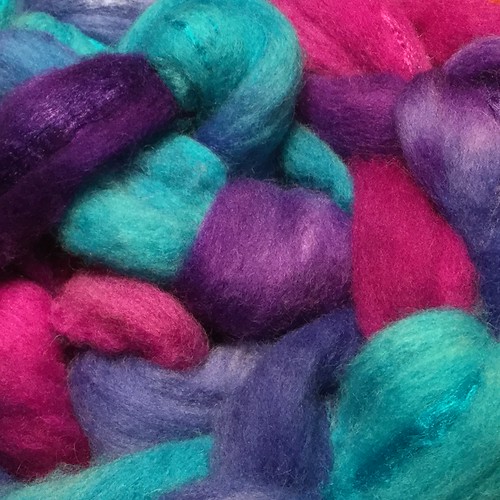

The March clubs have all been shipped early last week so now it is finally time to share the photos with you 😊
The clubs always come with a special gift (this time it was a special IxCHeL blend of earl grey with home grown dried cornflowers, yes I blend my own teas as well..lol) and also an in depth info sheet on the artist and the art work in forcus AND if you are a member of the Yarn club : a nice pattern for your yarn as well.
This month it was the intriguing Tamara de Lempicka.
Here are the photos of the fibre, yarn and batt club.
Don’t forget the sign ups for the club are atill open for this week. It is filling up pretty quickly now, so don’t wait too long !
 March Yarn Club
March Yarn Club March Fibre Club
March Fibre Club March Batt Club
March Batt ClubThe update of tonight is an amazing new blend of a super soft batch of Shetland wool blended with ultra shiny Mulberry Silk and a dash of Angora bunny.
Sheep have lived on the Shetland Islands for well over 1,000 years, adapting to the harsh environment and thriving in the cold, wet climate.
The sheep of Shetland were an important part of subsistence agriculture of the islands, and the rugged habitat and geographical isolation produced a breed that is distinct and significant. The Shetland breed likely descends from ancient Scandinavian sheep, and it is a member of the northern short tailed sheep breed family. Historically, only a few Shetland sheep were exported, and it was not until recently that large populations were established on the British mainland and in other countries. Though fleece continues to be the breed’s primary product today,
Shetland sheep are fine boned and small in size. Rams weigh 90–125 pounds, and ewes weigh 75–100 pounds. Most rams have spiraled horns, while most ewes are polled. Shetland sheep are calm and charming in disposition, docile, and intelligent. The Shetland breed is especially prized for its wool, which is fine, soft, and strong. Fleeces average two to four pounds and vary in crimp from wavy to straight. Other characteristics of the fleece vary according to recent selection history.
Populations of Shetlands in Britain, for example, have been selected for more standardized characteristics. These sheep tend to be single coated with fiber diameter averages of 23 microns and staple lengths of two to five inches.
Landrace populations, such as those on the island of Foula, include a greater range of fleece types. These sheep may be double coated, with coarser outer wool of 30-40 microns and finer inner coat wool of 12-20 microns.
Eleven colors and thirty color patterns are recognized in the Shetland breed. This diversity is a great asset both to the breed and to the fiber artisans who enjoy using its fleeces. A few importations of Shetland sheep are documented in North America during the past two centuries. For example, Thomas Jefferson, owned a small flock of Shetland sheep at Monticello. None of the historic flocks, however, survived as purebred populations. Most Shetland sheep in North America descend from a 1980 importation of 32 sheep by the late G.D. Dailley of Ontario, Canada.
Unfortunately there are no Shetland Sheep in Australia. I have been very fortunate to secure this supersoft batch of 18,4 micron Shetland which is truly extraordinary to spin, felt, knit and wear.
The Shetland Islands were originally settled by Neolithic farmers over 4500 years ago. The horns of the sheep they raised have been found in archaeological digs on the islands, providing evidence of their presence.
When the Vikings invaded and settled the Shetland Islands around the year 800, they brought over some short-tailed sheep from their continental herds, which interbred with the local sheep to produce further variation in an already hardy breed.
By the year 1200, farmers began breeding the sheep of the Shetland Islands with some of the long-woolled sheep that had been brought north by the Romans. Either by accident or on purpose, this developed wool that was both longer and softer, and was therefore quite desirable for woolen goods that could both be used at home and that could be traded.
In 1468, the Shetland Islands were mortgaged to Scotland to raise a dowry for the marriage of Margaret, a Danish princess, to James III of Scotland. A few years following the marriage, the Scottish decided to just go ahead and annex the islands. Despite the protests of the Danes, they succeeded and the Shetland Islands became a part of Scotland. Trade in wool from the Shetland Islands was already occurring by this point, although it was likely happening only with Scotland and the Nordic countries. However, by the early 1600s knitted stockings from Shetland sheep wool, well known by then for its softness and comfort, were available through trade to the English and the Dutch populations.
In 1707 the Shetland Islands officially became a part of the Kingdom of Great Britain when the Acts of Union united England and Scotland as one country. At this time, wool from Shetland sheep was already widely known as a quality wool that was already softer than much of the other wool that was available. Except, of course, for the wool from Spain’s Merino sheep, which was highly regarded throughout Europe as the softest wool available on the market.
As the late 1700s arrived, Great Britain set their sights on disrupting Spain’s firm grip on fine wool market.
It is important to understand that the wool industry in Europe during the 1700s and early 1800s was as beneficial to a country’s economy as industries such as steel, aluminum and technology are today. A country that could produce fine wool in great quantities was a country that would have a solid financial base, and with a solid financial base came power and influence. Great Britain wanted to be that country, and believed that by acquiring Spain’s Merino sheep to breed with their own, the British wool industry would as least be equal to Spain’s – if not outright exceed that of Spain’s. Unfortunately for Great Britain, Spain simply didn’t want to give them any Merino sheep. Spain tightly controlled their Merino sheep and while Spain had made gifts of Merino sheep to some countries beginning in 1735, England was not on their list. Who could blame them? Prior to Spain’s development of Merino sheep, the English had been dominant players in Europe’s wool industry and Spain certainly did not want them to regain their position in the wool market.
Enter King George III of Great Britain, Sir Joseph Banks, and Sir John Sinclair.
By the 1880s, King George III had commanded Sir Joseph Banks to either find or develop a sheep that could compete the Spanish Merinos. At this point in history, a revolution in English sheep breeding using methodical, scientific and selective techniques had been going on within Great Britain for a couple of decades (see the article on Bluefaced Leicester). So, King George III and Banks had good reason to believe that by identifying and breeding just the right sheep, they could come up with something that would allow Great Britain to compete with Spain’s wool industry. With Merinos unavailable, Banks looked around the globe for sheep that would be suitable for wool-improvement purposes, even going so far as to examine sheep from Tibet.
Sir John Sinclair of Scotland, a friend of Banks, had identified Shetland sheep as a promising breed. King George III was already a fan of having his stockings made of Shetland wool. The question was, could Shetland sheep be bred for the qualities the British wanted to have without Merinos, or would Merinos be required? Banks and Sinclair began a long correspondence by letters during the late 1780s through the 1790s exploring the possibilities. Sinclair sent samples of Shetland wool to Banks, but Banks was doubtful that the samples being sent to him, while fine and soft, were representative of the entire breed. He had noted that “stichel hairs,” longer and coarser hairs, were found in samples procured elsewhere. In fact, this was because many of the Shetland sheep of the time, like Icelandic sheep, were double coated and could produce both fine and thicker wool. Some Shetland sheep today still retain this trait.
Sinclair pressed Banks for many years to consider Shetland sheep as what Great Britain needed to breed for fine wool, describing what he referred to as the “kindly breed” of Shetland, or Shetland sheep that did not have the double coat with longer hairs that Banks disliked. He gifted Shetland wool to Banks that was “properly dressed and prepared” to exclude the long, rough hairs, making sure to include separate samples for Banks’ wife. He continually sent letters to Banks reassuring him that many of the Shetland sheep were free from the dreaded “stitchel hairs,” and then sent more letters discussing how he was looking at sheep from Denmark without long, coarse wool that might be bred with the Shetland to further reduce that trait. In another letter he describes how it is the method of gathering wool that produces the soft locks that Sinclair is looking for – Shetland sheep at the time, and many even today, will molt which allows the wool to be plucked off of the sheep. Sinclair let Banks know that this process, called rooing, meant that the wool was sorted between the fine wool and coarse wool as the plucking occurred.
Despite all of Sinclair’s efforts, Banks was unconvinced that Shetland sheep were the answer. He continued to look for ways to get Merino sheep to breed with the sheep of Great Britain, which he was certain was the solution to improve the wool qualities in British flocks.
In 1787, Banks managed to get two Merino rams and four Merino ewes out of Portugal, which became the base of the royal flock. Around this time, it can been seen from Sinclair’s letters that he gave up on the quest to convince Banks that Shetland sheep were the way of Great Britain’s future. Instead, Sinclair began to focus on breeding newly acquired Merinos from the royal flock to other sheep, and the Shetlands’ moment of glory began to fade. The Shetlands, like several other breeds of British sheep from that time, started to disappear as interbreeding for wool improvement resulting in the development of other lines of sheep.
By the early 1920s, there were not many purebred Shetland sheep left.
The wearing of Fair Isle sweaters by the British royal family in the early 1920 may have saved Shetland sheep from extinction. Fair Isle knitting is a stranded colourwork technique named after Fair Isle, one of the Shetland Islands, where distinctively patterned sweaters were knit using the technique.
These sweaters began their rise to popularity in 1921, when the Prince of Wales (later Edward III) wore his in public. Knitted mainly with the many hues of naturally colored wool produced by the sheep of the Shetland Islands, along with some dyed wool accents, these sweaters began to become immensely popular with the broader public.
The Fair Isle sweater hit the height of its popularity in the 1950s, although by that point it was often just the technique and design that made a sweater a Fair Isle sweater; it was no longer necessarily expected that the wool of the sweater be from the Shetland Islands, although if it was it did give the sweater that extra authenticity.
With the burgeoning popularity of Fair Isle sweaters, it is perhaps not surprising that a group of 1920s Shetland islanders were motivated to preserve the few remaining lines of Shetland sheep.
The Shetland Flock Book Society started in 1927, and around the same time the government was approached for assistance. The Department of Agriculture for Scotland agreed to support the effort by providing subsidies for purebred Shetland rams. The breed recovered slowly, though. Even the Fair Isle sweaters that were still knitted in the Shetland Islands during the 1950s did not necessarily use wool from the Shetland breed of sheep – there were still too few purebred Shetland sheep around, and the style of the day required bright dyed colors rather than the variety of natural colors provided by Shetland sheep – and dyed wool could be gotten from any sheep with white wool, not just white-wooled Shetland sheep.
By 1977, Shetland sheep were still listed as an endangered breed by the Rare Breed Survival Trust. However, interest in the sheep blossomed over the next several years, and by 1985 Shetland sheep were removed from the endangered breed list. It was perhaps not coincidental that the 1980s also marked the time during which Shetland sheep became popular among small farmers in United States. Although a few Shetland flocks had existed in the U.S. prior to the 1920s, it wasn’t a popular breed in the country until the 1980s, a time when many farmers in the U.S. were experiencing a renewed interest in rare breeds.
A few Shetland flocks are on record as having existed in the United States during the early 1900s. However, from 1921 until the 1980s, Shetland sheep were not allowed to be imported to the United States, which prevented U.S. farmers from acquiring Shetland sheep during those decades. Today, though, a number of U.S. farmers are making up for lost time by raising Shetland sheep. It is a rare county fair, state fair, or fiber animal show that does not include these adorable little sheep among its ranks of livestock.
Shetland sheep come in a wide variety of marking and colors – they include white sheep, black sheep, and a wide range of browns and grays. As a heritage, unimproved breed, Shetland sheep have one of three different kinds of fleeces: kindly/single-coated, long, and double-coated. The kindly/single-coated is the finest and shortest of the fleeces at only about 2-4 inches in length; it is used for fine knits such as lace, shawls and finely worked socks. The long fleeced Shetlands with soft and long staple wool between 4-8 inches in length are the most common these days, and much of the available yarn on the market is spun from their fleeces.
The double-coated Shetland sheep are even more versatile than that of either of the other types, having a remarkably soft undercoat of wool and long and lustrous outercoat of wool that can reach lengths between 6-10 inches or more. The coats of the double-coated sheep can be separated, or spun together. Generally, Shetland wool has a thickness of 23-25 microns, but is can be even finer or thicker depending upon where it is gathered from the sheep. Wool between 10-20 microns can be gathered from the neck and shoulders, while wool between 25-30 microns can be gathered from the britches. Like Merino, many people who find wool to be irritating to their skin discover that wearing clothing made from the wool of Shetland sheep to be quite comfortable and not itchy at all. The wool is graded from Fine at its smallest diameter of 10 microns to Medium at its largest diameter of 30 microns, making it a very comfortable wool to wear.
Please don't hesitate to contact me at any time if you have any questions okay? Always happy to enable. All my contact details are to be found at the end of this week’s blog entry. Have fun !!!
IxCHeL Super soft Silky Shetland Tops
Super soft Shetland , Mulberry silk with a "dash" of Angora bunny (70/25/5)
100+gram top AU$24
 |

Ice Orchid -3 left-
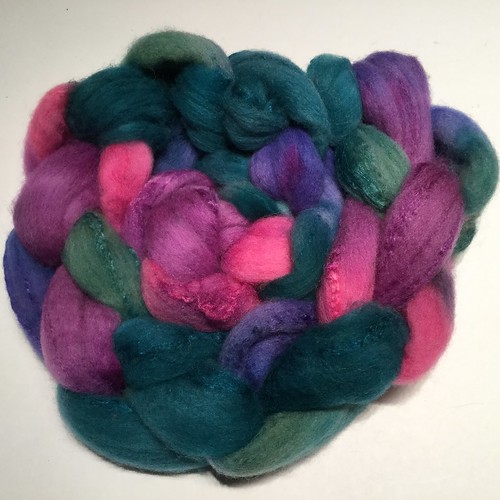 |
Water Lillies -sold-
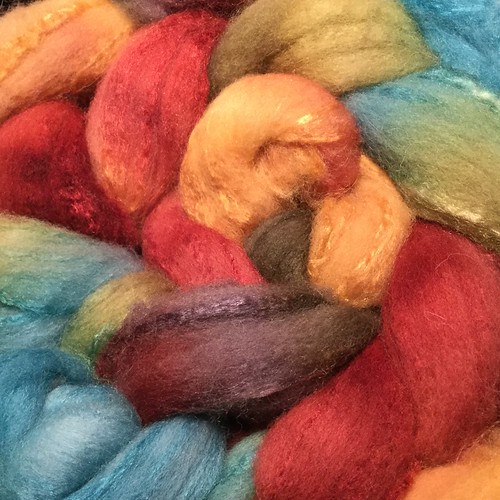
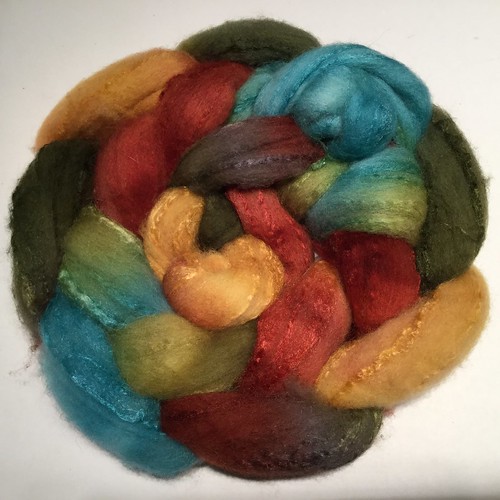 |

Gem Corn Magic-sold-
 |
Sky Dancer (Dyed with woad)-sold-
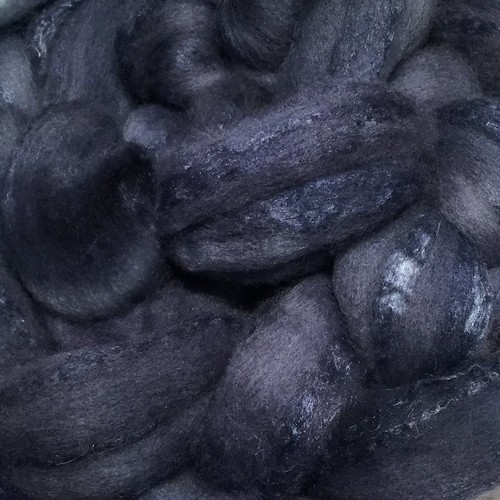
 |

Night Sky (dyed with Japanese Indigo)-sold-
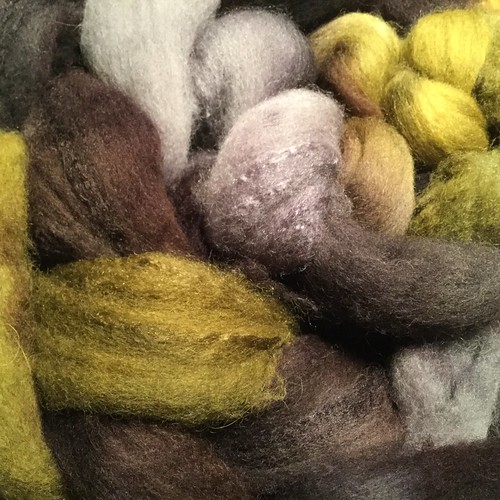
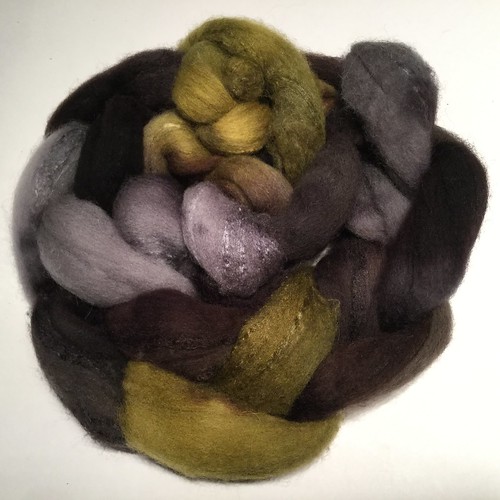 |

Rolling Stone-sold-
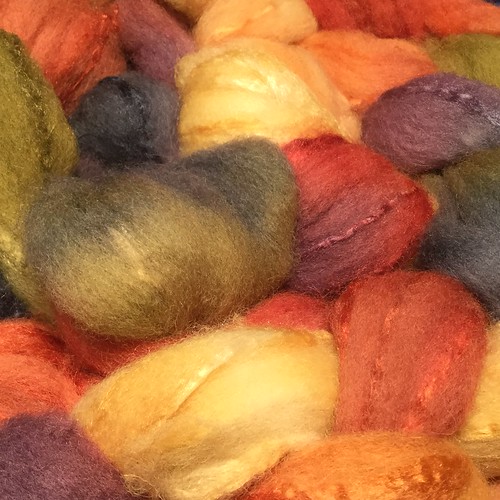
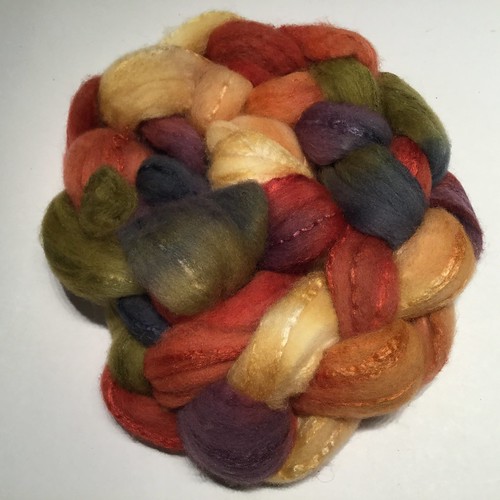 |

Ghost gum tree-4 left-
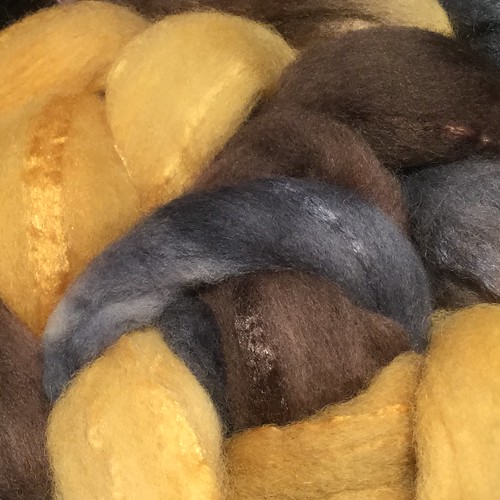
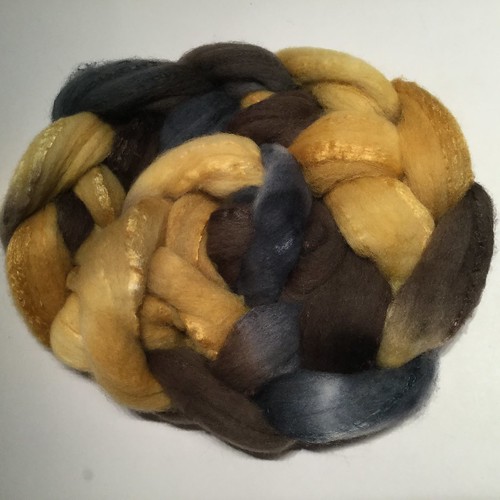 |

Bumble Bees-2 left-
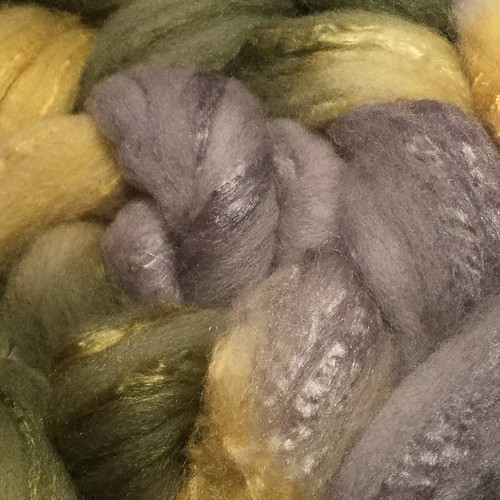
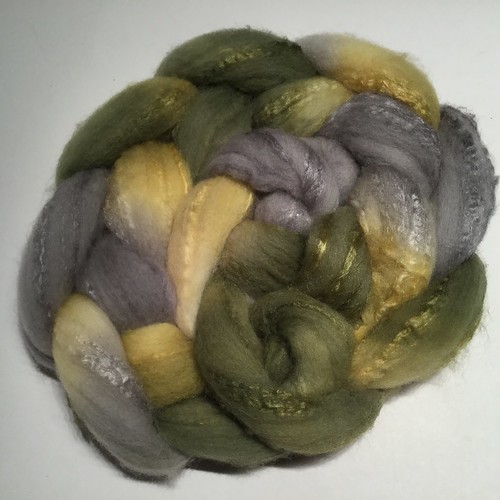 |

Odyssey-sold-
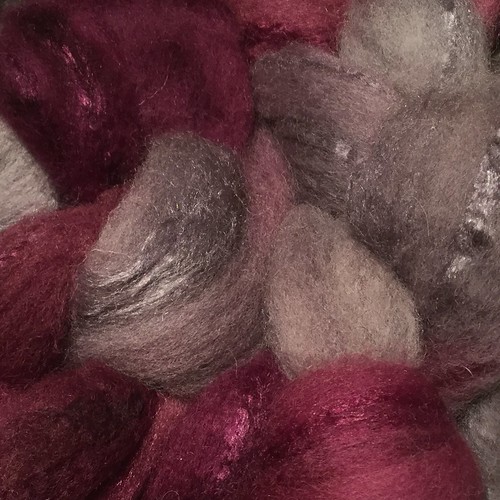
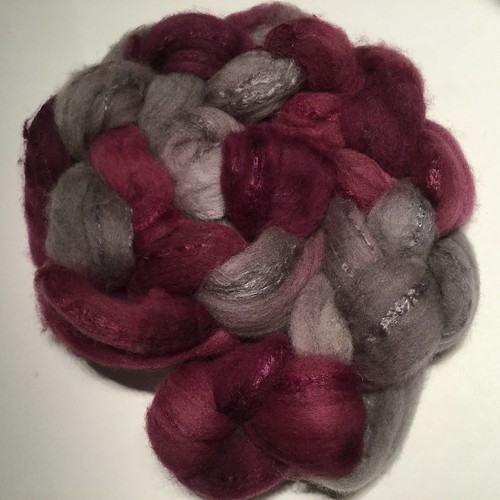 |

Lord Byron Romantic -2 left-
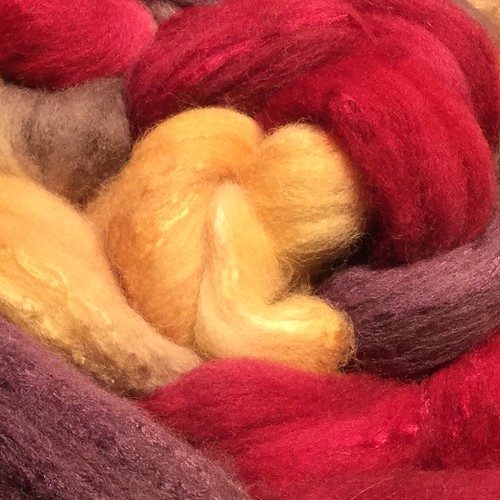
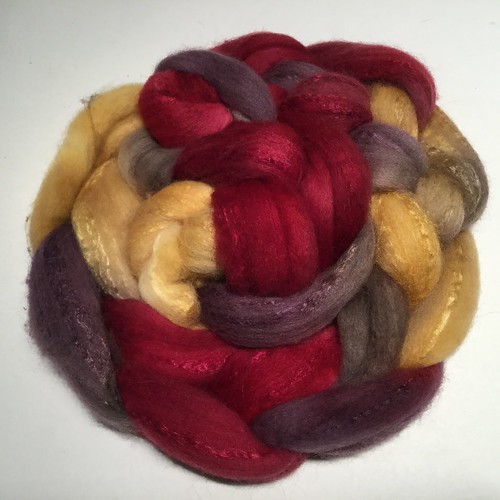 |

Love Heart-1 left-
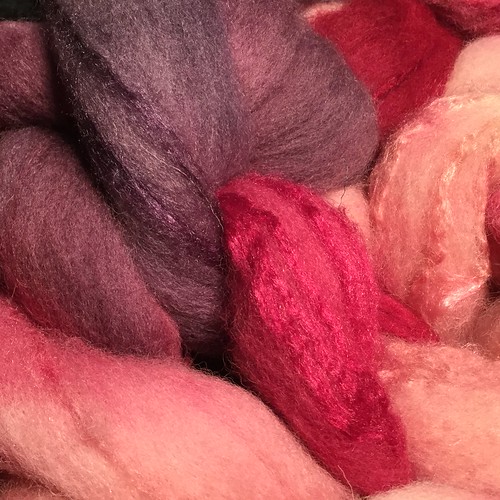
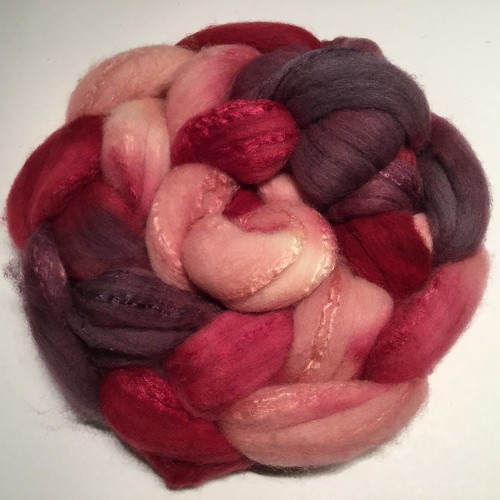 |

Rose Velvet-1left-
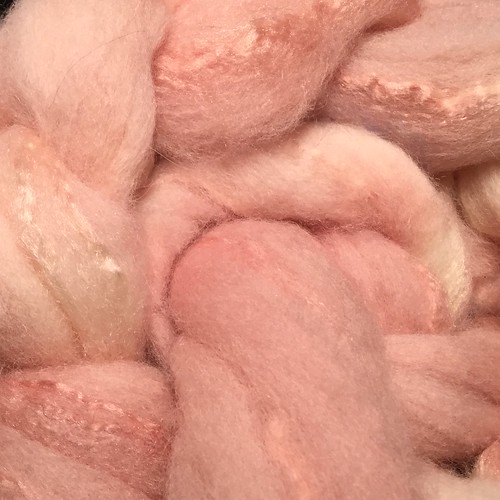
 |

Rose-sold-
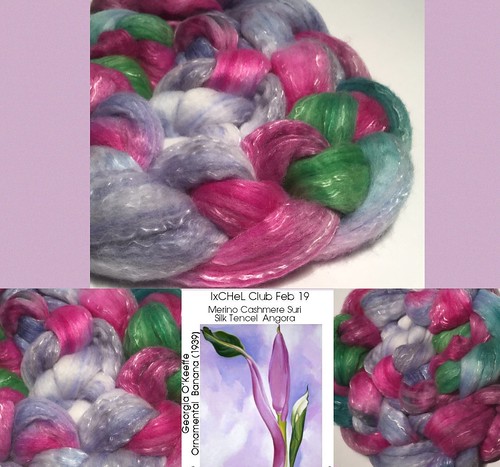
Coburg Town hall, 90 Bell Street, Coburg VIC 3058
I'll be there with an amazing amount of new exclusive NEW yarns (and some wool to spin as well) !!!
I will also have spindles by the amazing Bearded Dragon and lots of fibre tools as well from darning mushrooms to noste pinne, Turkish spindles, Navajo and Mayan spindles, Turkish spindles and needle cases to distaffs.
Get ready for a fabulous SUNDAY filled with lots of craft and YARNIE fun !!!
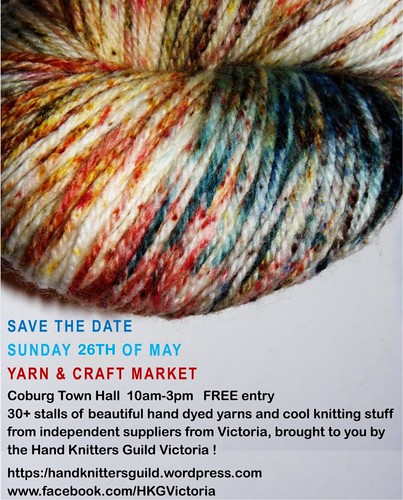
Go to http://www.sheepshow.com to see what is happening and book your tickets. The Bendigo Sheep and Wool show is the biggest wool show in Australia ! with an amazing amount of woolcraft, indie dyers, a huge amount of tops, yarn, craft, felt and spindles, spinning wheels and anything you need for your knitting,crocheting and crafting.
I will be there with an amazing amount of new exclusive wool blends and yarns, batts, felt and landscape and botanical natural dyes and so much more !!!
I will also have spindles by the amazing Bearded Dragon and lots of fibre tools as well from darning mushrooms to noste pinne, Turkish spindles, Navajo and Mayan spindles, Turkish spindles and needle cases to distaffs, and something amazing for spinners and knitters.
Get ready for a fabulous weekend filled with lots of craft and fun !!!


IxCHeL Club Sign ups for the second trimester of 2019 are OPEN for just one more week!!!
Here is the overview of all the clubs shipped out to all the members in 2018 and January 2019.
Teasers of the February club will be posted on my Instagram, Facebook and Twitter soon !
If you would like to join for the next round just PM me.
Here is a photo compilation of the 2018/2019 clubs to give you an idea what the "Art Journey" Theme has been all about : The interpretation of art into fibre. And I can add 2019 January club to that overview as well now !
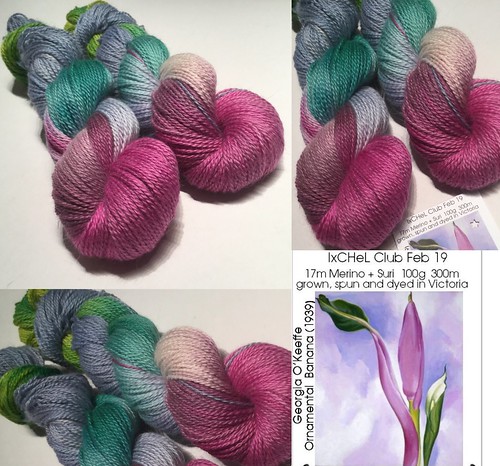 |

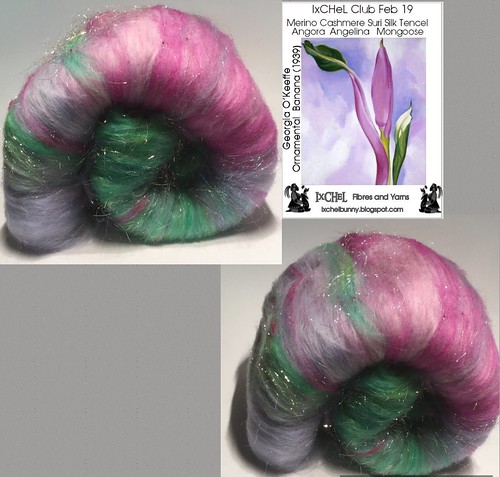 |
IxCHeL Fibre Club April, May and June 2019
TOTALLY FILLED UP !
The subscription is for a period of three months and you will receive one special hand dyed top/roving per month to the value of AU$25 or more.
All the tops will be hand dyed and will be especially made for the members of IxCHeL Fibre Club ! Price to join the IxCHeL Fibre Club #39 and receive your special hand dyed top :)) for three months (April, May and June 2019) is AU$75 + postage (parcel post or airmail). AND there are good value double serves available !!!
For Australia : single serve $75+$29 postage (parcel post), double serve $142+$29 (save $8) or triple serves $214 (save $11!) + postage
For USA + Canada: single serve AU$75+AU$57 (Airmail) double serve AU$142+AU$57; triple serve $214 (save $11) + postage
For UK,Europe, rest of the world: Single serve AU$72+AU$69 (airmail) Double serve AU$136+AU$69; triple serve $214 (save $11) + postage
For Asia: Single serve AU$72+AU$50 (airmail) Double serve AU$136+AU$50; triple serves $214 (save $11) + postage
If you want to receive a fibre surprise every month then join the IXCHEL FIBRE CLUB #39 now. Numbers are strictly limited ! The April 2019 Club is going to be shipped out end of April, the May club mid May and the June club Early June. Payment via direct deposit or credit card or paypal. Just PM or email me your details.
The IxCHeL Yarn Clubs April, May and June 2019
ONLY A FEW MORE SPOTS AVAILABLE!
Every month for three months (April, May and June 2019) you will receive: enough hand dyed luscious yummy yarn to make a pair of socks or a lush shawl or scarf of course! (the hand dyed yarn will be exclusive for the Ixchelbunny SOCK-IT-TO-ME Yarn CLUB and will range from a sockweight yarn (a 4ply/fingering weight yarn) or an 8ply / DK weight enough to make a pair of socks ; Every month a sock or scarf pattern, tips and instructions ! Now is that GOOD or is that GOOD ??!
I will even offer a double serve for those of you who like their socks or scarves extra long !
For Australia : single serve $87+$29 postage (parcel post) double serve $150( save $24!!) +$29 postage
For USA + Canada: single serve AU$87+AU$57 (Airmail) double serve $150 (Save $24!!) +AU$57
For UK,Europe, rest of the world: Single serve AU$87+AU$69 (airmail) Double serve $150 (Save $24!!) +AU$69
For Asia: Single serve AU$87+AU$50 (airmail) Double serve $150 (= Save $24!!!) +AU$50
Numbers are strictly limited !
Payment via direct deposit or credit card or paypal . Just PM or email me your details
By the way: you don’t HAVE to knit socks if you don’t want to.. the hand dyed yarn is amazingly nice for scarves, cowls, beanies and even tops ! Anything goes . The April 2019 Club is going to be shipped out end of April, the May club mid May and the June club Early June.
IxCHeL Funky Bunny Batt Clubs April, May and June 2019
TOTALLY FILLED UP !
Here are all the details. Just pm me when you have any questions or want to be part of the funky bunny batt club Movement ;-) Welcome to the blingy dark side ;-D
The subscription is for a period of three months and you will receive one special hand dyed funky bunny batt per month to the value of AU$40 or more .
The batts will range in weight from 140grams to 170grams with luxury fibres like camel , angora, cashmere, silk, yak, llama even wallaby and bison and rare sheep breeds !!!! All the batts will be hand dyed and will be especially made for the members of IxCHeL funky bunny Club ! Every month you will receive a HUGE luxury funky bunny batt !
Sign up now and you will receive an IxCHeL Hand dyed , super luxurious funky bunny batt for April , May and June 2019
Price to join the IxCHeL Funky bunny for three months is :
For Australia : $114+$29 postage (parcel post)
For USA + Canada: AU$114+AU$57 (Airmail)
For UK,Europe, rest of the world: AU$114+AU$69 (airmail)
For Asia: AU$114+AU$50 (airmail)
If you want to receive a fibre surprise every month then join the IXCHEL FUNKY BUNNY BATT CLUB now.
Numbers are strictly limited !
The April 2019 Club is going to be shipped out end of April, the May club mid May and the June club Early June. Payment via direct deposit or credit card or paypal. Just PM or email me
Have a fun week Creating your Dreams!
All my contact details are here:
Please don't hesitate to contact me at any time if you have any questions okay? Always happy to enable. All my contact details are to be found at the end of this week’s blog entry.
Have a fun weekend !!!
Have a fun weekend !!!
Please don't hesitate to contact me at any time if you have any questions okay? Always happy to enable. All my contact details are also to be found at the end of this week’s blog entry.
Have a creative week!
Please don't hesitate to contact me at any time if you have any questions okay? : Always happy to enable.
How To Order:
1. You can email me on ixchel at rabbit dot com dot au or ixchelbunny at yahoo dot com dot au
2. Message me on facebook or
3. Message me on www.ravelry.com where I am ixchelbunny.
4. message me on Instagram where I am @ixchelbunny
I will email you right back with all your order details and payment methods.
Any questions? Any custom orders for yarn or dyeing fibre? : Please don’t hesitate to ask! Always happy to enable.
2. Message me on facebook or
3. Message me on www.ravelry.com where I am ixchelbunny.
4. message me on Instagram where I am @ixchelbunny
I will email you right back with all your order details and payment methods.
Any questions? Any custom orders for yarn or dyeing fibre? : Please don’t hesitate to ask! Always happy to enable.
Dates to put in your Calendar
McClelland Spinners And Weavers Guild Spin in
Wednesday April 10th, 10 - 3pm
At the McClelland Sculpture Park (follow the signs once you enter the park, you have to drive a bit to get to the right cottage)
Theme for this years SPin In is :
EASTER BONNET - HAT
It's still time to create your very own Easter Hat with or without Bunnies !
Here is a hat with bunnies you can make with a free pattern:
and here is the link to the pattern:
https://craftox.com/free-bunny-hat-knitting-pattern-fair-isle-jacquard/
Handknitters Guild Show, Coburg Town Hall
Sunday 26th of May, 10 – 3pm.Coburg Town hall, 90 Bell Street, Coburg VIC 3058
I will also have spindles by the amazing Bearded Dragon and lots of fibre tools as well from darning mushrooms to noste pinne, Turkish spindles, Navajo and Mayan spindles, Turkish spindles and needle cases to distaffs.
Get ready for a fabulous SUNDAY filled with lots of craft and YARNIE fun !!!

Friday July 19th to Sunday July 21st
Australian Sheep and Wool Show, Bendigo.Go to http://www.sheepshow.com to see what is happening and book your tickets. The Bendigo Sheep and Wool show is the biggest wool show in Australia ! with an amazing amount of woolcraft, indie dyers, a huge amount of tops, yarn, craft, felt and spindles, spinning wheels and anything you need for your knitting,crocheting and crafting.
I will be there with an amazing amount of new exclusive wool blends and yarns, batts, felt and landscape and botanical natural dyes and so much more !!!
I will also have spindles by the amazing Bearded Dragon and lots of fibre tools as well from darning mushrooms to noste pinne, Turkish spindles, Navajo and Mayan spindles, Turkish spindles and needle cases to distaffs, and something amazing for spinners and knitters.
Get ready for a fabulous weekend filled with lots of craft and fun !!!

RABBIT ON !
((hugs))
Charly

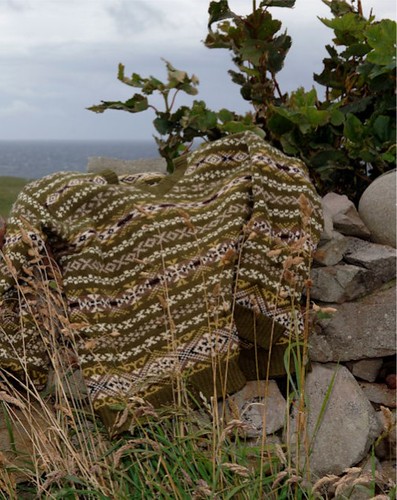

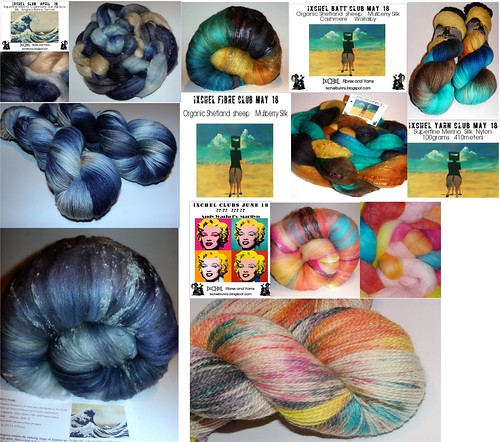

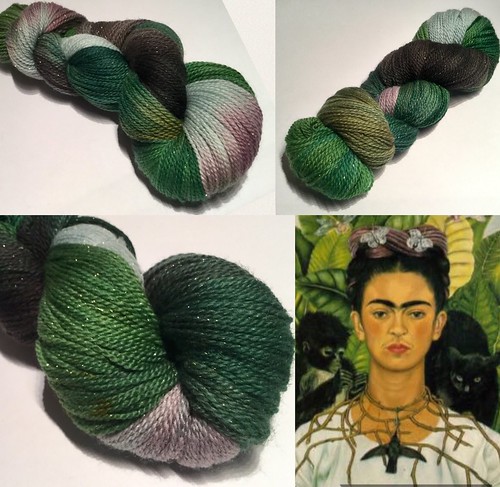
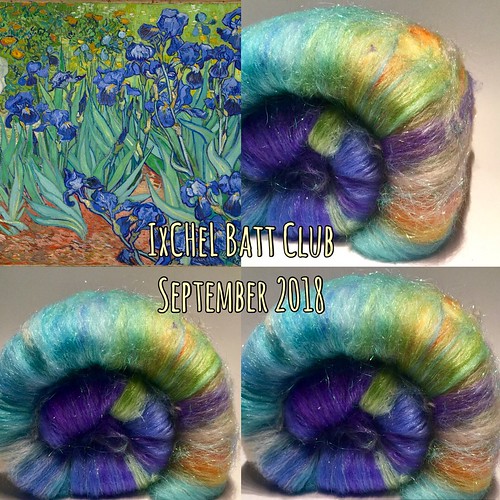
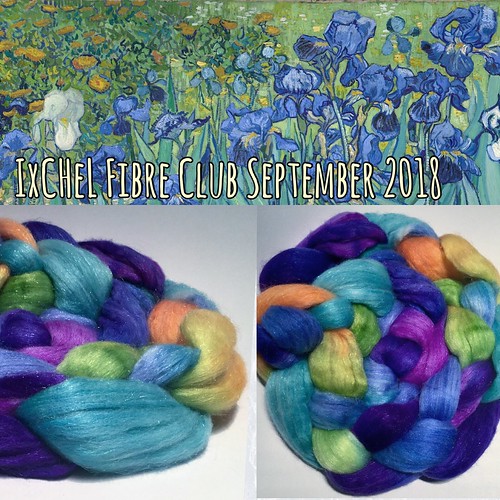
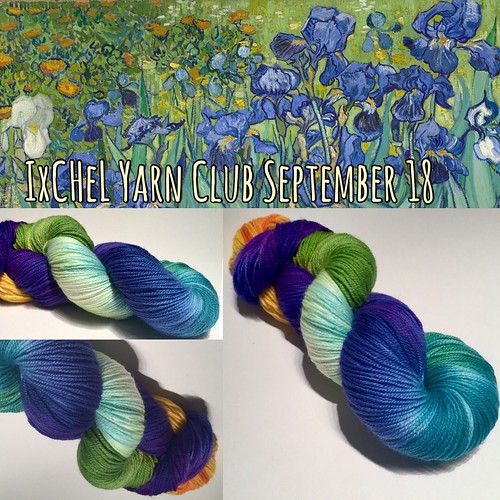





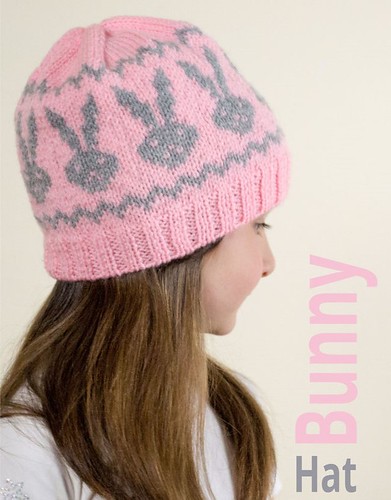




No comments:
Post a Comment